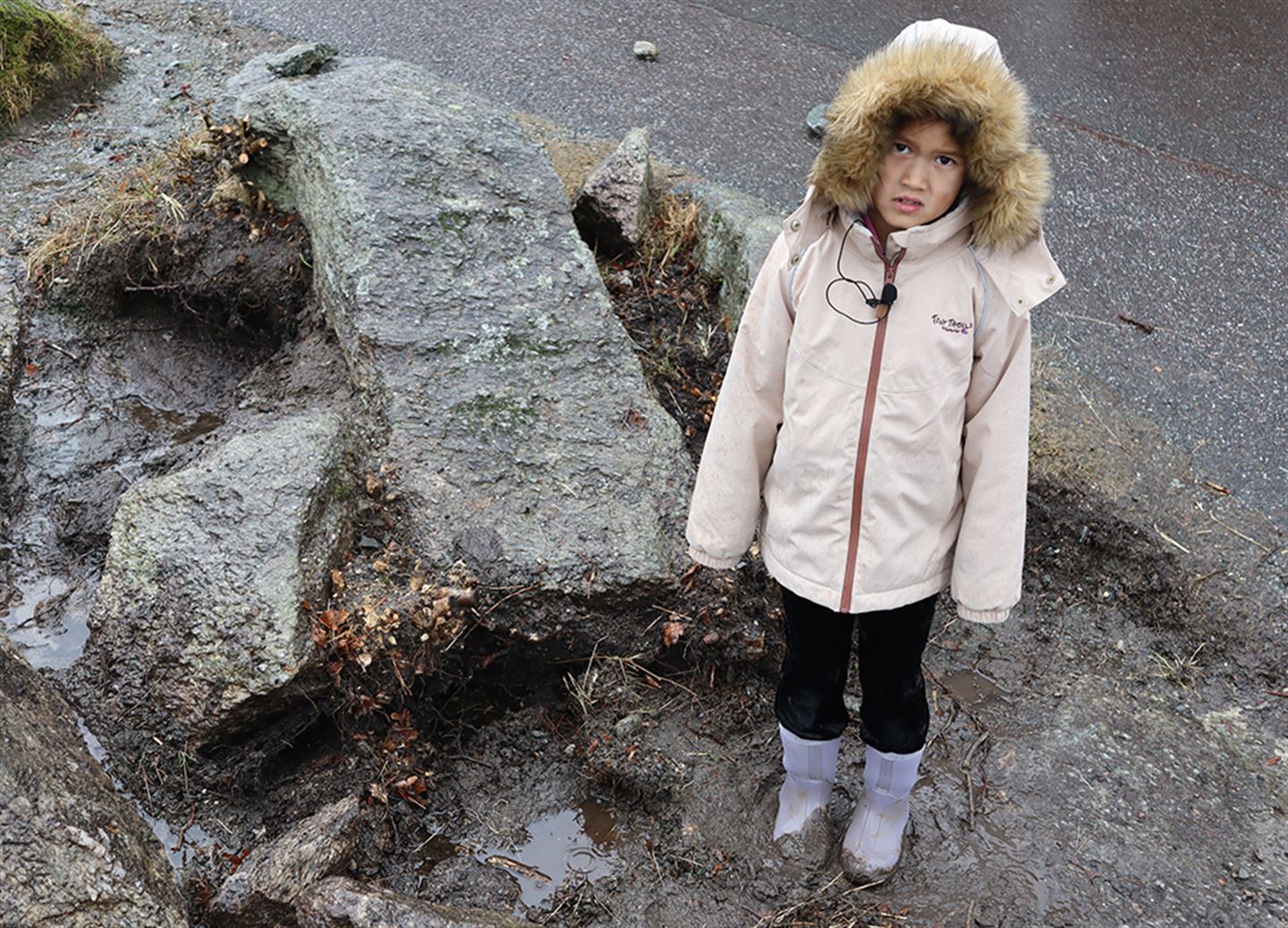
Someone dropped their dagger in Norway sometime in the late Stone Age. More than three millennia on, eight-year-old Elise picked it up.
An announcement by Vestland County, on the country’s west coast, recounted how Elise spotted the five-inch-long artifact amongst rocks on the playground at Os’ Children’s School. “I was going to pick up a piece of glass,” she said. “The stone was there. It was nice.”
Elise brought that nice stone to her teacher, Karen Drange, who recognized its potential significance—jagged, decisive edges indicated that the object had been fashioned on purpose, while its gray-brown hue belied flint, a functional stone not naturally found in Norway. Local code requires civilians to report traces of “prehistoric activity” to the county council, so Drange did.
The dagger (Photo: Vestland County Municipality)
In cooperation with the University Museum in Bergen, Vestland County Council solicited the expertise of local archaeologist Louise Bjerre Petersen. Upon examining the object’s shape and style she determined it is “a beautiful flint dagger from the Neolithic,” dated to about 1,700 B.C.E., around the time humans were shifting from hunting to farming societies. Though Bjeree Petersen said such relics are “very rare to find,” over the past year alone, Vestland County researchers have discovered a number of Stone Age settlements across their Scandinavian landscape.
Os’ Children’s School, however, did not such yield further finds. Vestland County Council partnered with the University Museum, led by archaeologist Howell M. Roberts and section leader Morten Ramstad, in collaboration with Bjerre Petersen, to excavate the school’s grounds.
Roberts, Ramstad, and Petersen excavating the school grounds (Photo: Thomas Bruen-Olsen, University Museum in Bergen)
“We found neither more objects nor traces of the Stone Age,” she said, “but the dagger Elise found is quite unique.”
The object is speculated to hail from Denmark, where such flints abound. According to research by the National Museum of Denmark, Stone Age blades like these were regarded both as working tools and status symbols, offered in sacrifices and buried with the bodies that owned them.
The University Museum has cataloged the dagger for reference and will continue its research into how the artifact ended up in Norway.